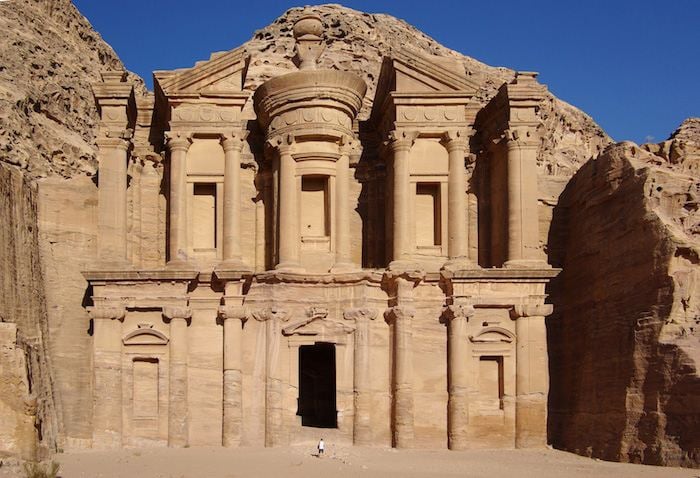
Source: Wikipedia
Lost Civilizations: The Nabataeans
Straight out of an Indiana Jones movie, the ancient Nabatean Treasury of Al-Khazneh played host to the final scene of “The Last Crusade” and it’s easy to see why. The mysterious people who occupied Jordan in the sixth century BC are responsible for carving one of the most breathtaking stone cities in the world. Remarkably, their buildings have stood the test of time.
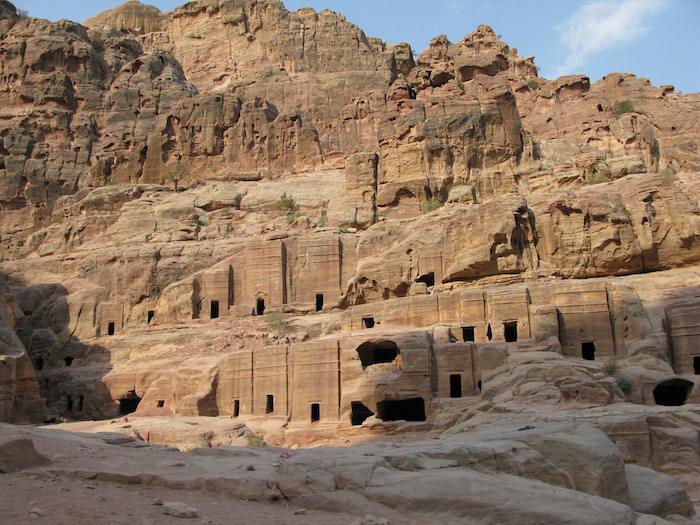
Initially travelers by trade that moved miles across the desert in their caravans, the sudden settlement of the Nabateans has puzzled historians. As if overnight, they crafted one of the most intricate stone cities, hidden away and accessed only via a 1200 meter long crack in the rock. However, it’s not just the secret city which the Nabateans left historians and anthropologists to unravel. Their history was never recorded and it is here where the biggest mystery lies.
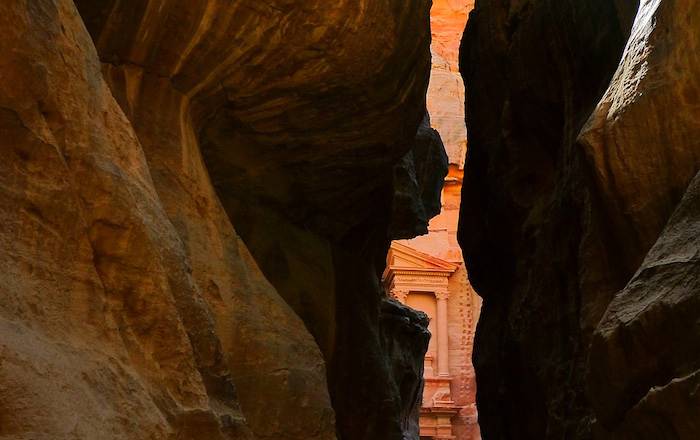
Source: Fly See Stay
While the few scraps of surviving documents convey a people rich in diversity, they also speak of a population who was incredibly literate. Scattered and graffitied inscriptions on the canyon walls show that even shepherds could read and write. Alas, the Nabateans themselves never recorded their heritage or so much as wrote a single scroll about their history.
Even the tales the Greeks and Romans told of the Nabatean civilization are largely lies crafted by the Nabateans to hide their precious trade routes and secrets. Which leaves the unanswered question; what exactly were they hiding?
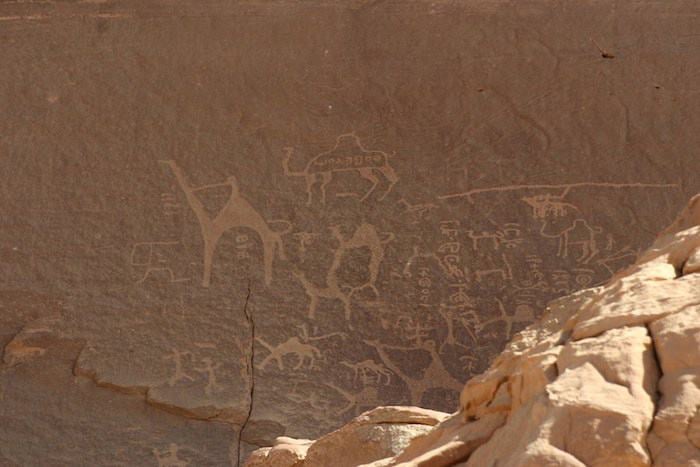
Chiseled straight into the sandstone Mountains of Petra, the Nabatean civilization lived off a complex system of man-made canals and dams that saved them from the dry desert on their doorstep. Trading in precious South Arabian frankincense and myrrh, they expanded their territory out to the furthest reaches of Damascus using the lucrative profits of their spice trade.
Unfortunately, by 106 AD, Petra and its people were conquered by Roman Emperor Trajan and their civilization slowly vanished into the vast Greco-Roman culture. However, the remains of the once magnificent stone citadel can still be visited by tourists today.
Lost Civilizations: The Khmer
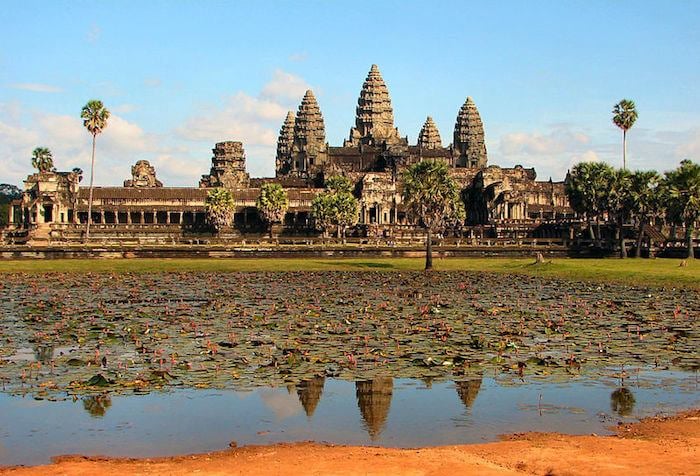
Source: UQ History
The Khmer Empire, also known as the Angkor civilization, is shrouded in mystery. The towering stone turrets of the central palace and the intricately carved buildings all speak of a powerful empire once at the top of the preindustrial world. Built by ancient kings of Cambodia beginning in 500 AD, the civilization spread across Vietnam, Thailand and Laos, with its center in Angkor – the Sanskrit word for ‘city’.
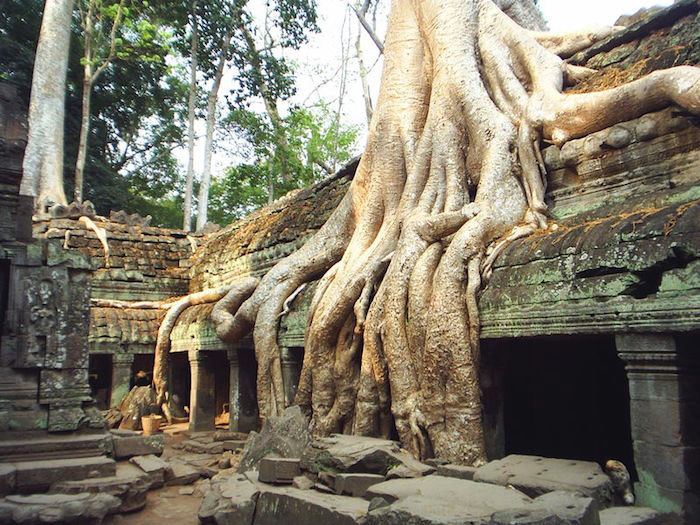
Source: American University
Not only known for their ability to build masterful and monumental temples, the Khmer were also among the first civilizations to develop a road network that even included bridges over their man-made canals and main highways, some of which were over 800km long. Now a twisting jungle maze of ruins, at the peak of its civilization, Angkor was a force to be reckoned with.
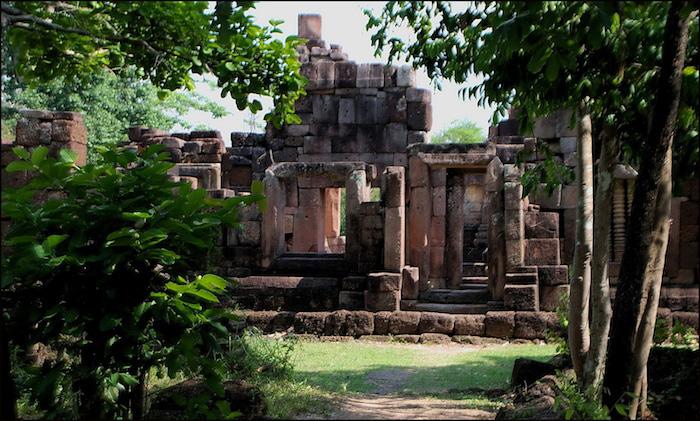
Source: All Points East
Considered the greatest king of the empire around 1200 CE, King Jayavarman VII went on to construct hospitals for his subjects and quickly expelled the kingdom’s anarchists to offset uprisings. Threat of invasion was never really an issue, either. Boasting high stone walls and an elaborate layout that would scatter enemy resources, the Khmer would often celebrate the success of their city against foreign invasion, holding festivities yearly that brought music, wrestling and even a form of fireworks into their civilization.
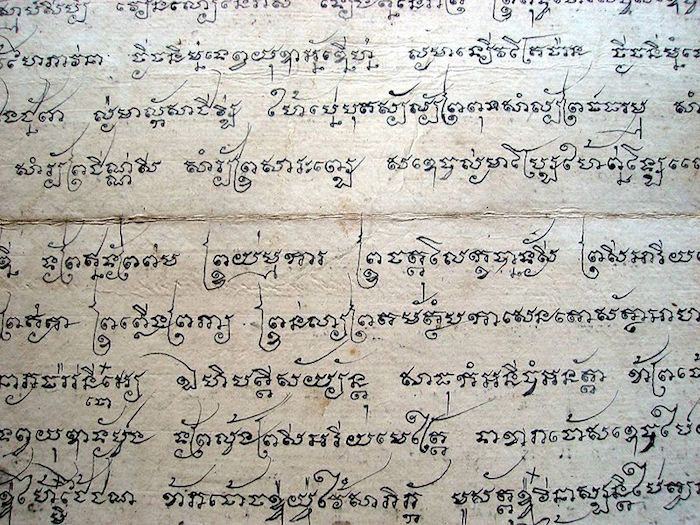
Source: Wikimedia Commons
People of the Angkor Civilization were devoutly religious and built the incredible monument of Angkor Wat at the city center as a dedication to the Hindu god Vishnu. Its turrets were thought to mirror the Hindu cosmos; these being the axis of the universe, home of the gods and the peaks of the mythical Mount Meru. As another civilization with a sophisticated irrigation system, they often saw bountiful rice harvests and were largely self-sufficient.
However, the civilization dissolved during the 15th century, and historians have never been able to pin point the exact reason. Some argue that war with other kingdoms ravaged the once prosperous empire, or that unpredictable monsoons annihilated the rice harvests.
As most artifacts have been lost to time and nature has reclaimed much of the decrepit Khmer territory, it’s unlikely that we will ever truly know the reason why the Khmer Empire fell.
Lost Civilizations: The Minoans
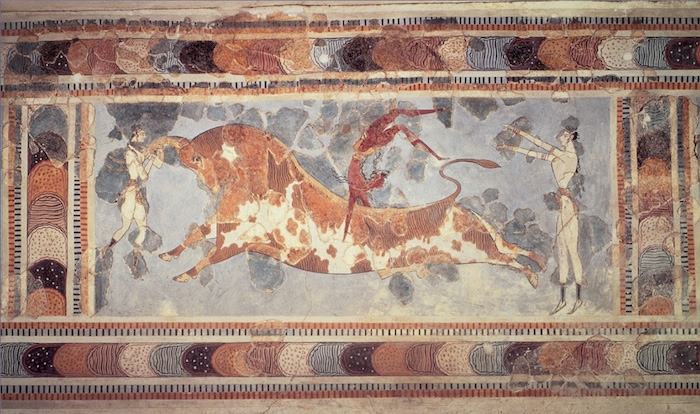
Source: Wikipedia
As one of the most awe-inspiring civilizations in human history, the legacy of Crete’s Minoans has generated many myths that have stood the test of time. Living on the small Aegean island of Thera during the 27th century BC, they were actually the first civilization to pave roads and use running water. Centers of commerce kept trade booming, and the remarkable mosaics and frescos all cultivated a culturally rich cosmopolis.
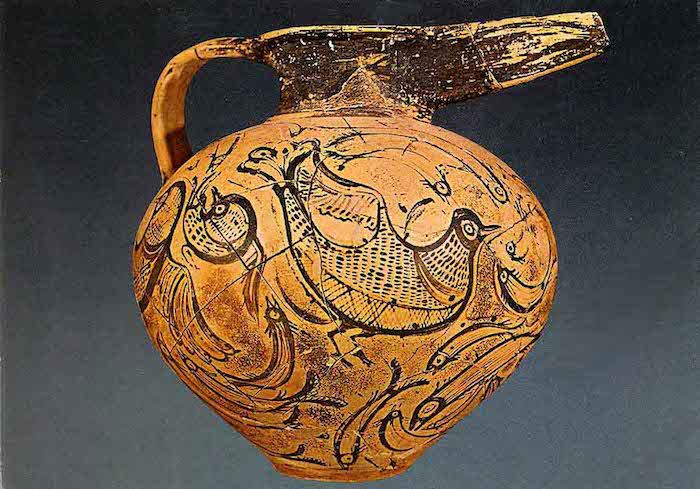
Source: Dream Hosters
Other findings depict a rich culture in terms of age and art. Pieces of recovered pottery even date back as far as the Neolithic period. Gorging themselves on the freshest fruits and wines that the Island had to offer, Minoans were no stranger to the decadence of the Greeks, and adapted their practice of worshiping female deities. The most highly regarded goddess, Potnia, was only offered the finest honey, and other deities like the fertility goddess and the deity of wild animals were all believed to govern the island.
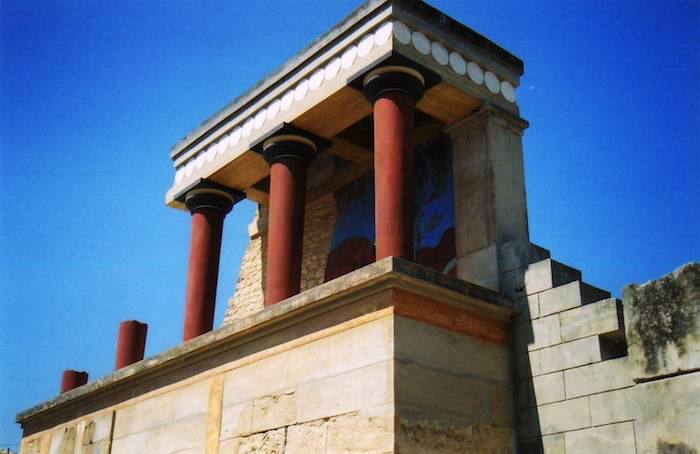
Source: Holidays In Crete
That’s not all the Minoans are known for. Admired by the ancient Greeks, the palace of Knossos was incredibly elaborate, and people often talked of its mysterious secrets that lay within the walls. King Minos, the great ruler at the heart of the legend was said to own a blood-thirsty, man-eating bull called the Minotaur who resided in a winding labyrinth below the palace.
From this legend sprang the likes of Jason and the Minotaur, along with other tales that the Greeks passed down through the ages. But, as 1600 BC approached and the island became more prone to severe and volatile environmental patterns, an unstable volcano at the city center erupted and wiped out the entire city.
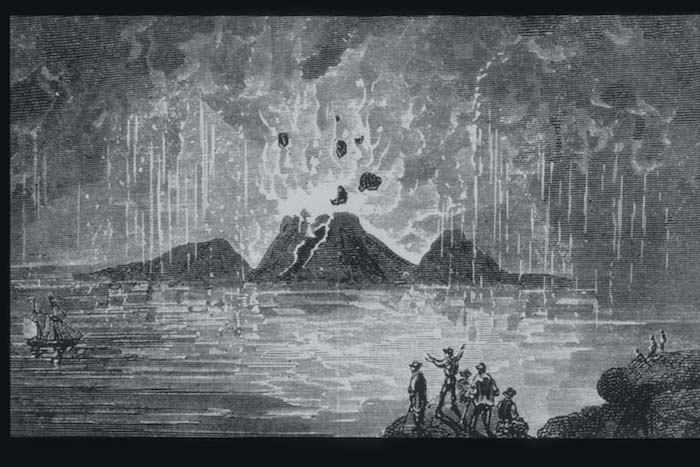
Source: Western Washington University
As one of the largest recorded volcanic eruptions in history, the devastation was so wide spread that smaller communities on nearby islands and coastal towns of Crete were decimated. History has it that the eruption that wiped out the Minoan city of Akrotiri also inspired Plato’s story of Atlantis. Nevertheless, history-minded tourists can still wander about the ruins today.
Lost Civilizations: The Indus Valley

Source: National Geographic
A twisting maze of bricks, the Indus Valley civilization has been classified as one of the greatest man-made wonders of the ancient world.
From 2600 BC, the Indus civilization, now part of modern day Afghanistan and Pakistan, covered a remarkable 1.25 million kilometers of land, made up of mud brick cities and sophisticated villages. They even had their own drainage system and a booming jewelry and craft trade that passed through the settlements.
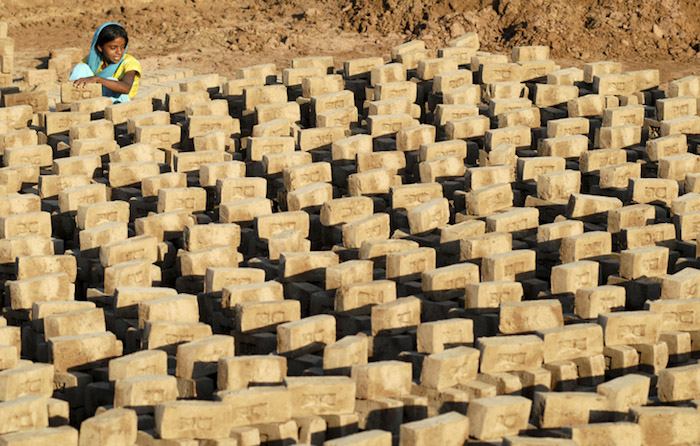
Source: BBC
The Indus Valley people were pioneers in engineering, creating complex weight systems that enabled greater trade options. At the center of the Indus Valley lay the impressive Mohenjo-daro; one of the world’s largest early urban settlements with what historians believe to be a population in excess of five million people.
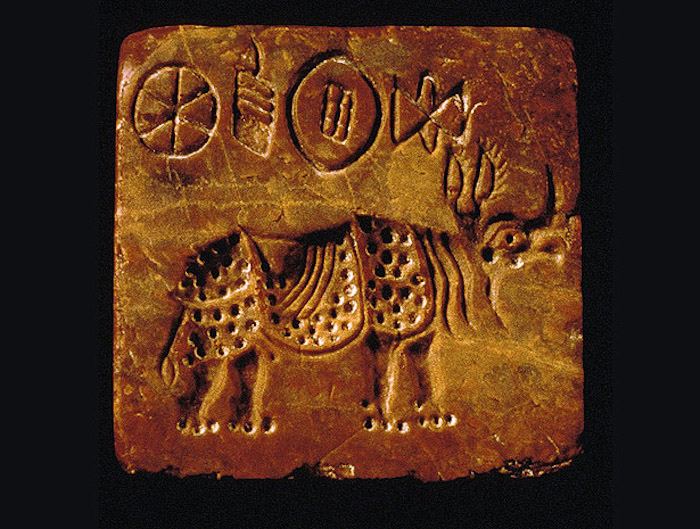
Source: BBC
Using their own script to communicate and record their history, large amounts of writing have yet to be deciphered, and their secret methods of carving and metallurgy remain hidden. However, archeologists discovered a wealth of beautiful Indus Valley seals in the ruins that they believe were used to stamp clay onto trade packages, almost like an early form of postage. With some artifacts still buried beneath the bricks, the Indus Valley may hold even more treasures yet to be discovered.
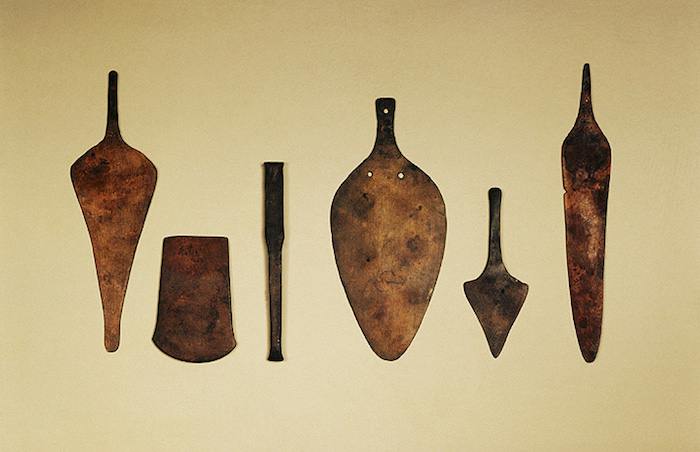
Source: BBC
Unfortunately, the Mohenjo-daro and other settlements were abandoned in the 19th century BCE, and it wasn’t until 1922 that the ruins were rediscovered by modern day archeologists, along with artifacts like these spearheads. Again, the reason why the Indus Valley people left is unclear, however one theory is that invasion from Indo-European tribes forced them out.
Lost Civilizations: The Moche
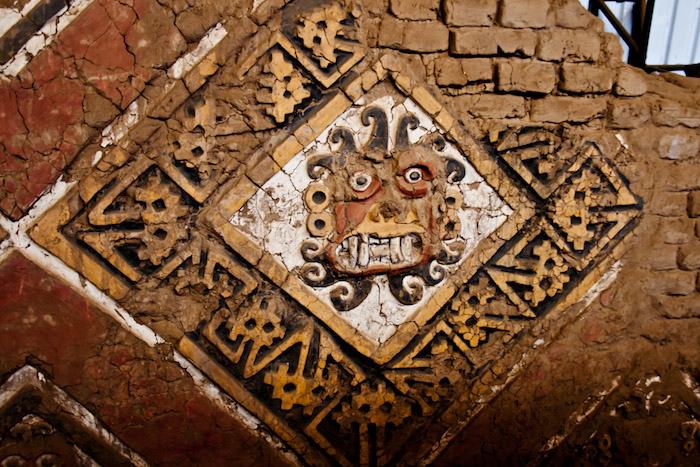
As brutal as they were beautiful, during 100 BCE the Peruvian Moche civilization was responsible for creating intricately complex canals and pyramids that enabled them to live off the land. With no written language or way of preserving their history, archeologists have had to piece together their existence through a series of uncovered artifacts and incredibly crafted monuments that leave the civilization entrenched in mystery.
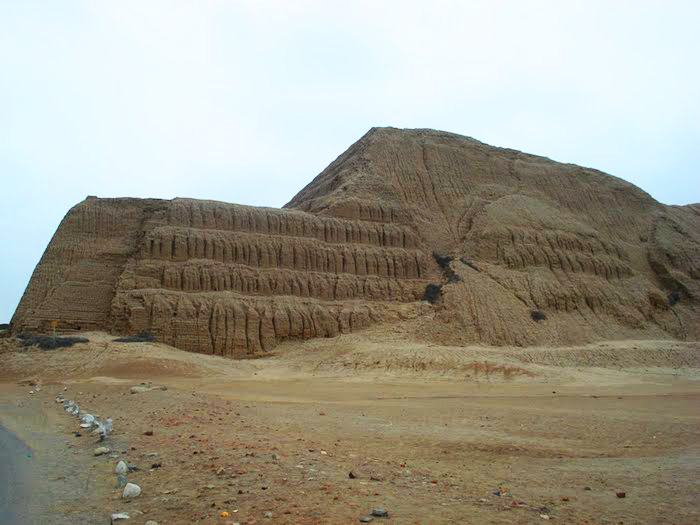
Source: Blogspot
Although the Moche didn’t inscribe their history, they found their own way of passing down their craft tofollowing generations through ceramic pottery. Moche pottery is said to be among the most varied in the world, and they were among the first civilizations to create molds that enabled them to produce pieces en masse. Incredibly, the red and white pots that have been unearthed seem to document important social changes of the time like war and celebration days; forming a kind of unwritten physical history.
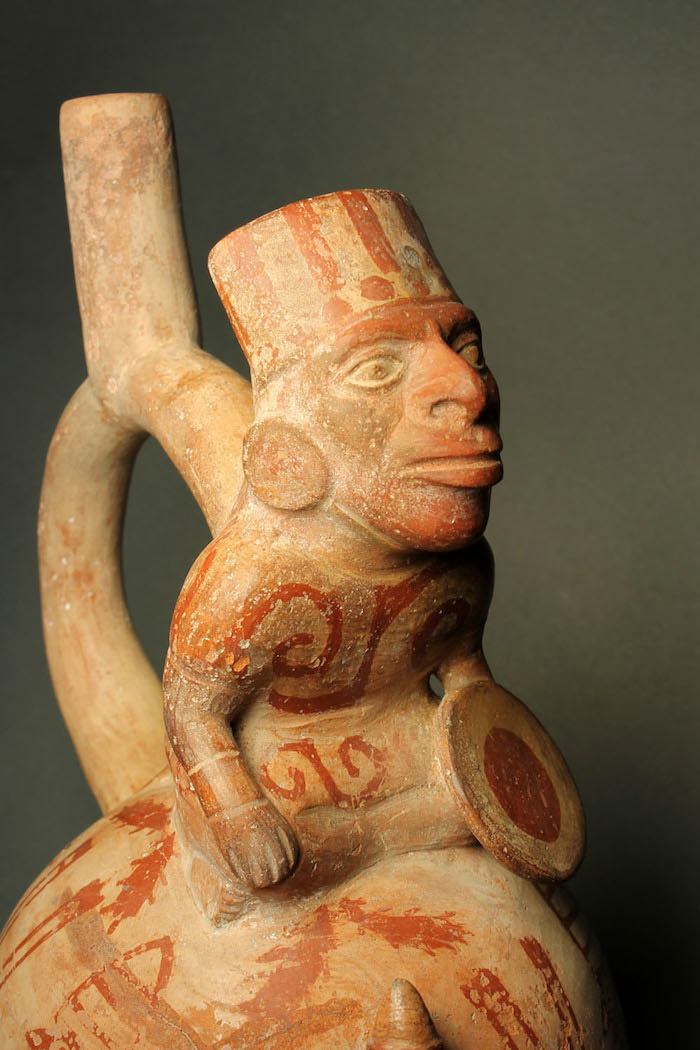
However, it is the brutality of the civilization which has really attracted the attention of historians and archeologists. While they were remarkably creative and artistic, the Moche were prone to participating in extreme religious ceremonies that often ended in human sacrifice. Archeologists have discovered the remains of a woman believed to be the High Priestess of the Moche in an underground tomb with bodies of sacrificed children keeping her corpse company.
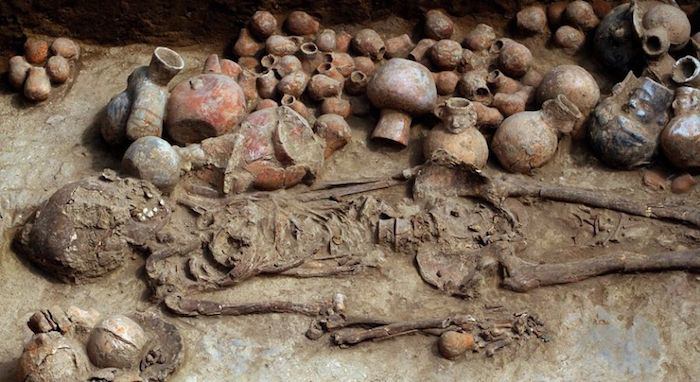
The High Priestess was said to rule by physical force, and if there was a disagreement among the settlement, instead of a trial, disputing parties would take part in a ritualized combat to the death.
Historians are still trying to solve the riddle of the Moche, but it’s thought that they were killed by the El Niño weather effect El Niño, which causes both extreme floods and droughts and would have been enough to wipe out an entire civilization.





